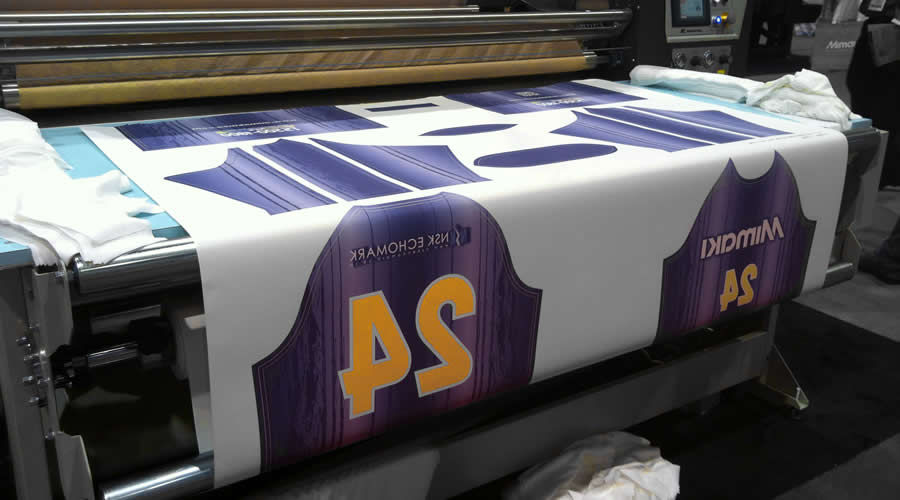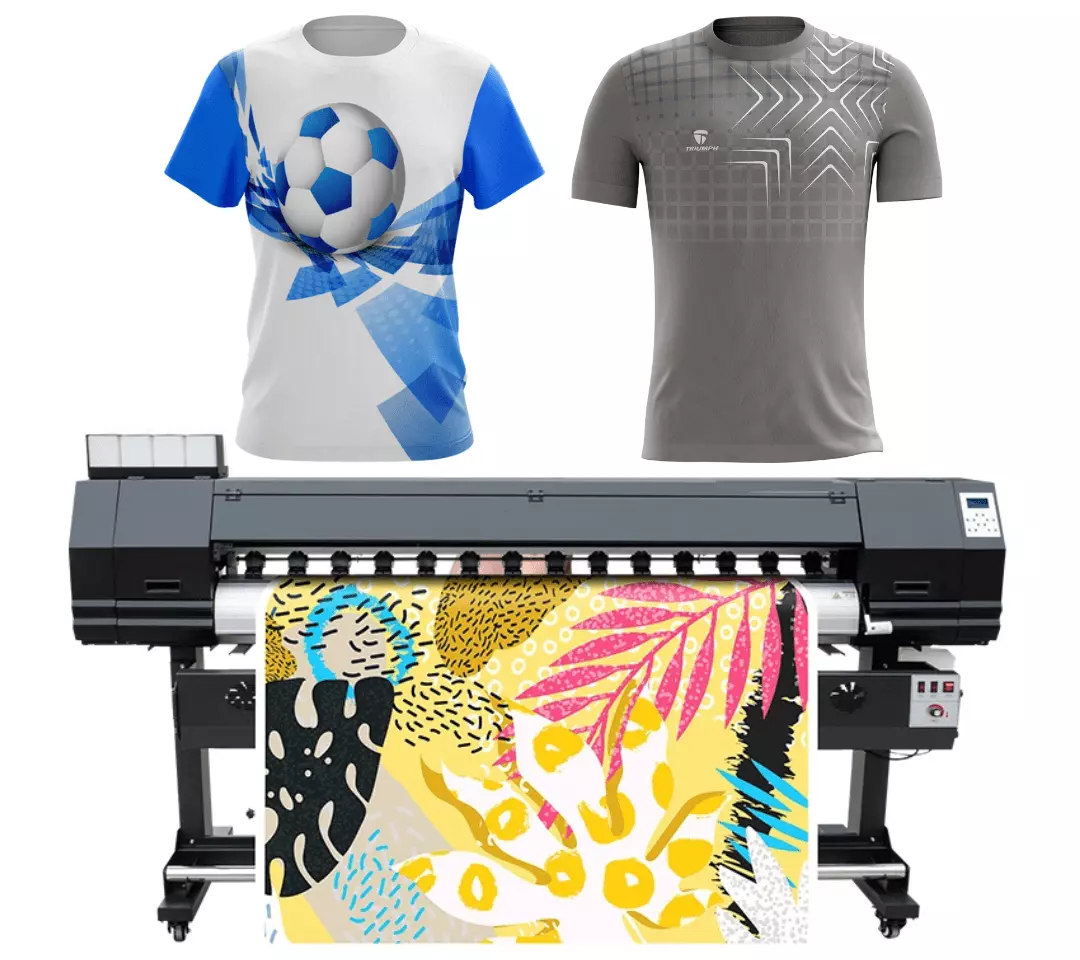Raise Your Layouts with DTF Printing: A Comprehensive Guide
Wiki Article
From Traditional to Digital: Recognizing the Development of Towel Printing
The change of cloth printing from traditional methods like block printing and resist coloring to modern methods such as screen and electronic printing notes a considerable shift in the fabric sector. Exactly how do these developments affect the significance of fabric printing, and what might the future hold for this ever-evolving craft?Conventional Cloth Printing Approaches
In the very early stages of fabric production, typical fabric printing approaches served as the keystone of fabric style, supplying both performance and imaginative expression. Block printing, one of the oldest techniques, entailed carving complex layouts into wooden blocks, which were after that dipped in color and pressed onto material.Stand up to dyeing, including methods like batik and tie-dye, employed wax or other compounds to avoid dye from permeating particular locations of the fabric. This technique produced striking contrasts and detailed layouts, typically imbued with social significance. Stenciling, another conventional technique, entailed reducing patterns right into a product and using color through the openings, providing an easier yet efficient means to generate recurring layouts.
These traditional methods not only shaped the textile industry's early development but also laid the groundwork for future developments. Each method showed the local and cultural features of its beginning, protecting and disseminating artisanal knowledge through generations.
The Increase of Display Printing
Exactly how did screen printing change the landscape of fabric style? The introduction of screen printing in the very early 20th century noted a substantial separation from standard techniques, providing unmatched flexibility and efficiency. This technique entails pressing ink with a fine mesh display that has actually been stenciled with a style, permitting high accuracy and uniformity. Screen printing enabled developers to create elaborate patterns and dynamic colors on fabrics, which were formerly challenging to achieve with block printing or hand-painting methods.One of the vital benefits of screen printing is its capability to replicate intricate designs on a huge scale with impressive fidelity. This scalability made it tremendously preferred in the industrial fabric market, where mass manufacturing without sacrificing top quality is critical. Display printing accommodates a large array of inks and dyes, increasing the palette of structures and coatings available to designers.
Moreover, the procedure is highly adaptable, appropriate for numerous fabric types including cotton, silk, and synthetics. This flexibility, incorporated with its cost-efficiency for large runs, solidified screen printing's duty as a foundation of contemporary fabric production. Hence, the rise of screen printing reinvented the sector, pressing the borders of what was feasible in fabric design.

The Introduction of Digital Printing
Building on the amazing improvements brought by display printing, the textile market experienced one more groundbreaking advancement with the introduction of digital printing. Emerging in the late 20th century, digital printing transformed the way designs are transferred onto textiles, supplying extraordinary adaptability and performance. Unlike traditional approaches, which usually called for considerable arrangement and substantial hand-operated treatment, digital printing employs computer-aided design (CAD) modern technology to generate complex patterns straight onto the material with high precision.This innovation has actually allowed textile makers to meet the growing need for customization and on-demand manufacturing. By eliminating the demand for plates and displays, digital printing reduces preparations and lessens product waste, making it a more lasting choice. The ability to publish complicated images and a vast variety of colors in a solitary pass has opened up new creative opportunities for designers, cultivating a surge in imaginative expression within the industry.
In addition, digital printing sustains smaller sized batch manufacturing runs, which is particularly helpful for niche markets and start-up style brands. This technical leap has not just boosted operational performance but additionally democratized access to top quality fabric printing, establishing the stage for future technologies in material layout and production.
Contrasting Strategies: Conventional Vs. Digital
While both electronic and typical printing methods have their very own one-of-a-kind advantages, they differ considerably in regards to process, effectiveness, and ecological influence. Conventional fabric printing, incorporating techniques like block printing and screen printing, includes hands-on labor and detailed workmanship. These methods are celebrated for their ability to produce vibrant shades and rich structures, often resulting in special, artisan-quality items. Nonetheless, they are labor-intensive, taxing, and often limited in terms of color selection and design complexity.
In contrast, electronic printing utilizes sophisticated technology to transfer layouts straight onto material using inkjet printers. This approach supplies unmatched accuracy and a large array of shade alternatives, allowing extremely comprehensive and elaborate layouts. Digital printing is significantly quicker, enabling fast turn-arounds and just-in-time production, which reduces the requirement for huge stock storage. In addition, it sustains personalization and small set manufacturing, dealing with modern customer needs for individualized products.
From an environmental point of view, digital printing is generally much more lasting. It makes use of less water and generates very little waste compared to conventional methods, which frequently involve comprehensive cleaning and coloring processes. Digital printing is increasingly preferred in an age where ecological considerations are paramount.
Future Trends in Cloth Printing
As the fabric industry continues to advance, future patterns in towel printing regularly direct towards higher integration of modern technology and sustainability. One substantial pattern is the raised application of digital printing modern technologies. These innovations enable for greater accuracy, faster production times, and the capacity to create complicated styles that were when difficult with traditional techniques. Digital textile printing is expected to control the marketplace, driven by its efficiency and versatility to consumer needs for personalized and limited-edition products.
In addition, the unification of wise fabrics, which integrate digital parts into fabrics, is set to revolutionize the marketplace. These fabrics can offer additional performances such as temperature regulation, wellness monitoring, and interactive functions. As innovation remains to development, the intersection of electronic printing and clever textiles will open up brand-new opportunities for creative and useful applications in cloth printing.
Verdict
The development of fabric printing from conventional methods to digital innovations notes a substantial makeover in the fabric market. While conventional techniques highlight artisanal workmanship and social heritage, digital printing provides unrivaled precision, performance, and personalization.The improvement of cloth printing from traditional techniques like block printing and resist coloring to contemporary strategies such as screen and electronic printing marks a substantial shift in the fabric industry. Display printing enabled designers to generate complex patterns and vibrant shades on fabrics, which were previously testing to accomplish with block printing or hand-painting approaches.
Building on the impressive developments brought by display printing, the textile market experienced another groundbreaking growth with the arrival of digital printing. screen printing. Typical fabric printing, encompassing techniques like block printing and display printing, involves hands-on labor and detailed craftsmanship. As innovation proceeds to advance, the crossway of electronic printing and smart Branded clothing fabrics will certainly open new opportunities for practical and imaginative applications in cloth printing
Report this wiki page